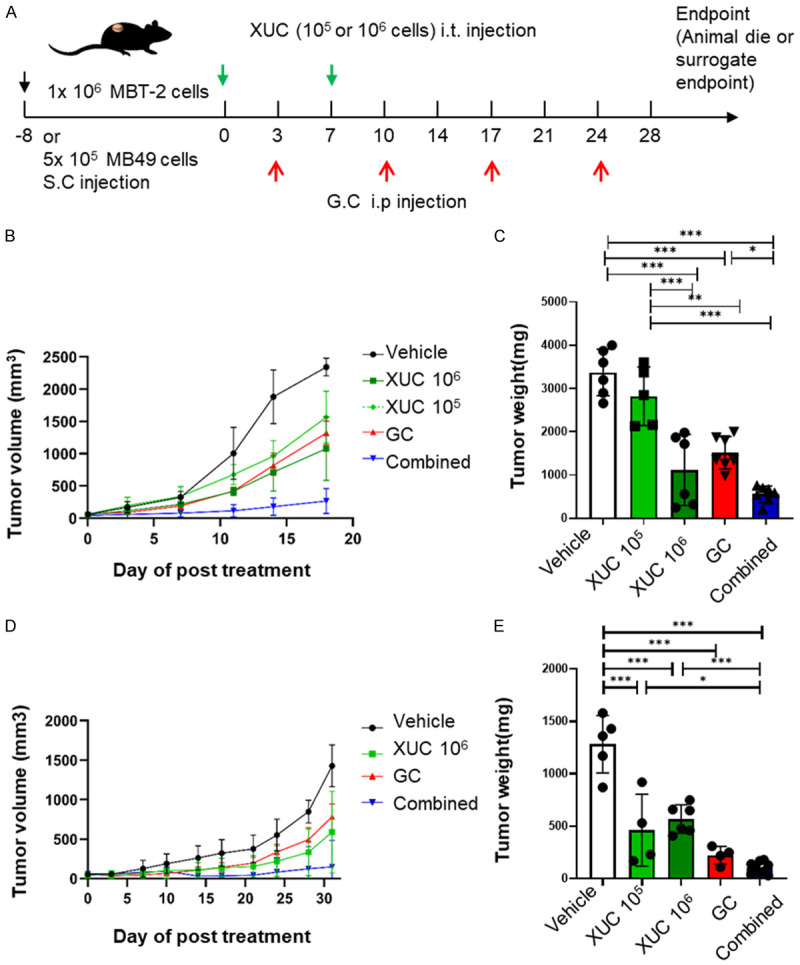Figure 1.

The anti-tumor effect of intratumoral xenogeneic urothelial cells in monotherapy and combination with chemotherapy using two murine bladder heterotopic graft tumor models. The mice were injected subcutaneously (s.c.) with either MBT-2 or MB49 cells into the hind flanks and when the tumor size reached 50-100 mm3, mice were randomized into 4 groups (day 0) received vehicle control, two consecutive intratumoral (i.t.) injection of xenogeneic urothelial cells (XUC) (1 × 105 or 106 cells), intraperitoneal (i.p.) injection of gemcitabine (6 mg/mouse, day 1) and cisplatin (0.12 mg/mouse, day 2) (GC), or combined treatment of XUCs plus GC. Tumor diameters were measured twice a week for 28 days. Tumor volume was determined using the formula for a spheroid: (0.5 × length × width2). A. Experimental design and treatment scheme. B. Tumor growth rate measured in volumes of MBT-2 tumor bearing mice with different treatments. C. Tumor weights from MBT-2 tumor bearing mice with different treatments. D. Tumor growth rate measured in volumes of MB49 tumor bearing mice with different treatments. E. Tumor weights from MB49 tumor bearing mice with different treatments. All tumor volumes are expressed as the mean tumor burdens ± SD (standard deviation, n = 5-10 mice/group). Tumor weights are expressed as mean ± SD (n = 6-7 per group). Significances were compared with mice that received vehicle, or mice that received either intratumoral XUCs or GC chemotherapy alone. *P<0.05; **P<0.01; ***P<0.001.
